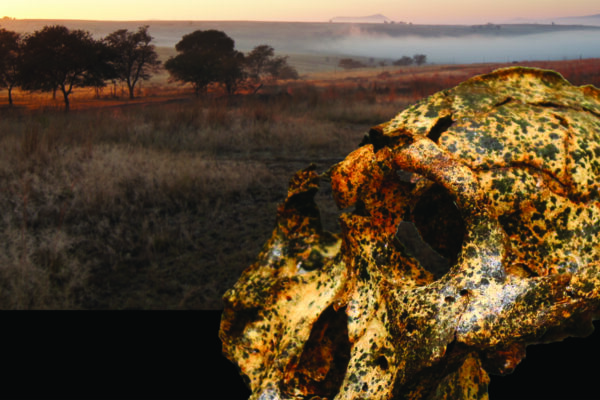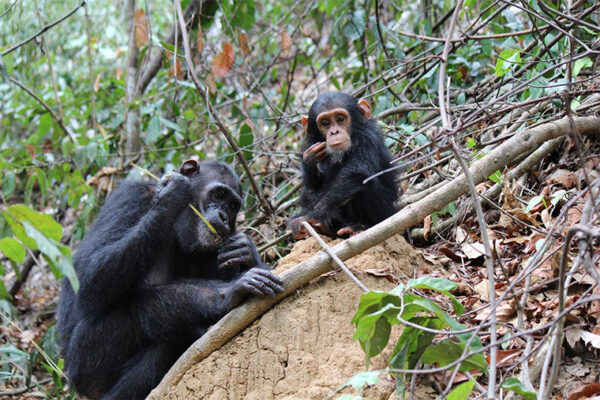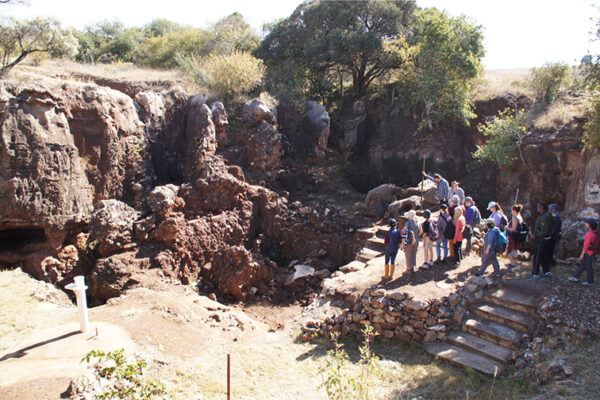Robert W. Sussman presented on the theory of Man the Hunted during “The Origin and Nature of Human Sociality” at 8:30 a.m. Feb. 19 as part of the American Association for the Advancement of Science’s Annual Meeting Feb. 16-20 in St. Louis, MO.
You wouldn’t know it by current world events, but humans actually evolved to be peaceful, cooperative and social animals.
In his latest book, an anthropologist at Washington University in St. Louis goes against the prevailing view and argues that primates, including early humans, evolved not as hunters but as prey of many predators, including wild dogs and cats, hyenas, eagles and crocodiles.
Despite popular theories posed in research papers and popular literature, early man was not an aggressive killer, argues Robert W. Sussman, Ph.D., professor of anthropology in Arts & Sciences.

And examine the evidence they did. Sussman and Hart’s research is based on studying the fossil evidence dating back nearly seven million years. “Most theories on Man the Hunter fail to incorporate this key fossil evidence,” Sussman says. “We wanted evidence, not just theory. We thoroughly examined literature available on the skulls, bones, footprints and on environmental evidence, both of our hominid ancestors and the predators that coexisted with them.”
Since the process of human evolution is so long and varied, Sussman and Hart decided to focus their research on one specific species, Australopithecus afarensis, which lived between five million and two and a half million years ago and is one of the better known early human species. Most paleontologists agree that Australopithecus afarensis is the common link between fossils that came before and those that came after. It shares dental, cranial and skeletal traits with both. It’s also a very well-represented species in the fossil record.
“Australopithecus afarensis was probably quite strong, like a small ape,” Sussman says. Adults ranged from around 3 to 5 feet and they weighed 60-100 pounds. They were basically smallish bipedal primates. Their teeth were relatively small, very much like modern humans, and they were fruit and nut eaters.
But what Sussman and Hart discovered is that Australopithecus afarensis was not dentally pre-adapted to eat meat. “It didn’t have the sharp shearing blades necessary to retain and cut such foods,” Sussman says. “These early humans simply couldn’t eat meat. If they couldn’t eat meat, why would they hunt?”
It was not possible for early humans to consume a large amount of meat until fire was controlled and cooking was possible. Sussman points out that the first tools didn’t appear until two million years ago. And there wasn’t good evidence of fire until after 800,000 years ago. “In fact, some archaeologists and paleontologists don’t think we had a modern, systematic method of hunting until as recently as 60,000 years ago,” he says.
“Furthermore, Australopithecus afarensis was an edge species,” adds Sussman. They could live in the trees and on the ground and could take advantage of both. “Primates that are edge species, even today, are basically prey species, not predators,” Sussman argues.
The predators living at the same time as Australopithecus afarensis were huge and there were 10 times as many as today. There were hyenas as big as bears, as well as saber-toothed cats and many other mega-sized carnivores, reptiles and raptors. Australopithecus afarensis didn’t have tools, didn’t have big teeth and was three feet tall. He was using his brain, his agility and his social skills to get away from these predators. “He wasn’t hunting them,” says Sussman. “He was avoiding them at all costs.”
Approximately 6 percent to 10 percent of early humans were preyed upon according to evidence that includes teeth marks on bones, talon marks on skulls and holes in a fossil cranium into which sabertooth cat fangs fit, says Sussman. The predation rate on savannah antelope and certain ground-living monkeys today is around 6 percent to 10 percent as well.
Sussman and Hart provide evidence that many of our modern human traits, including those of cooperation and socialization, developed as a result of being a prey species and the early human’s ability to out-smart the predators. These traits did not result from trying to hunt for prey or kill our competitors, says Sussman.
“One of the main defenses against predators by animals without physical defenses is living in groups,” says Sussman. “In fact, all diurnal primates (those active during the day) live in permanent social groups. Most ecologists agree that predation pressure is one of the major adaptive reasons for this group-living. In this way there are more eyes and ears to locate the predators and more individuals to mob them if attacked or to confuse them by scattering. There are a number of reasons that living in groups is beneficial for animals that otherwise would be very prone to being preyed upon.”


